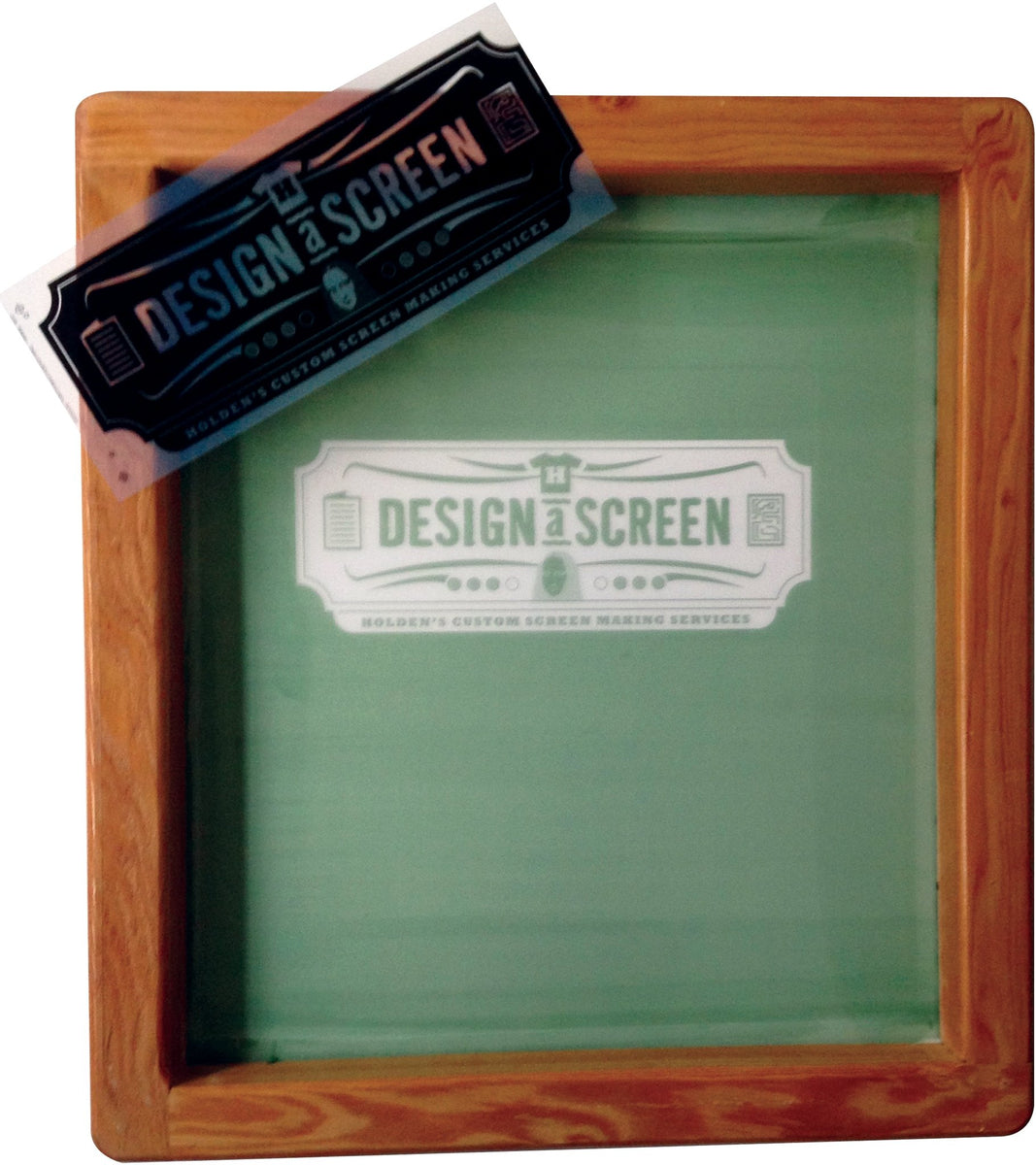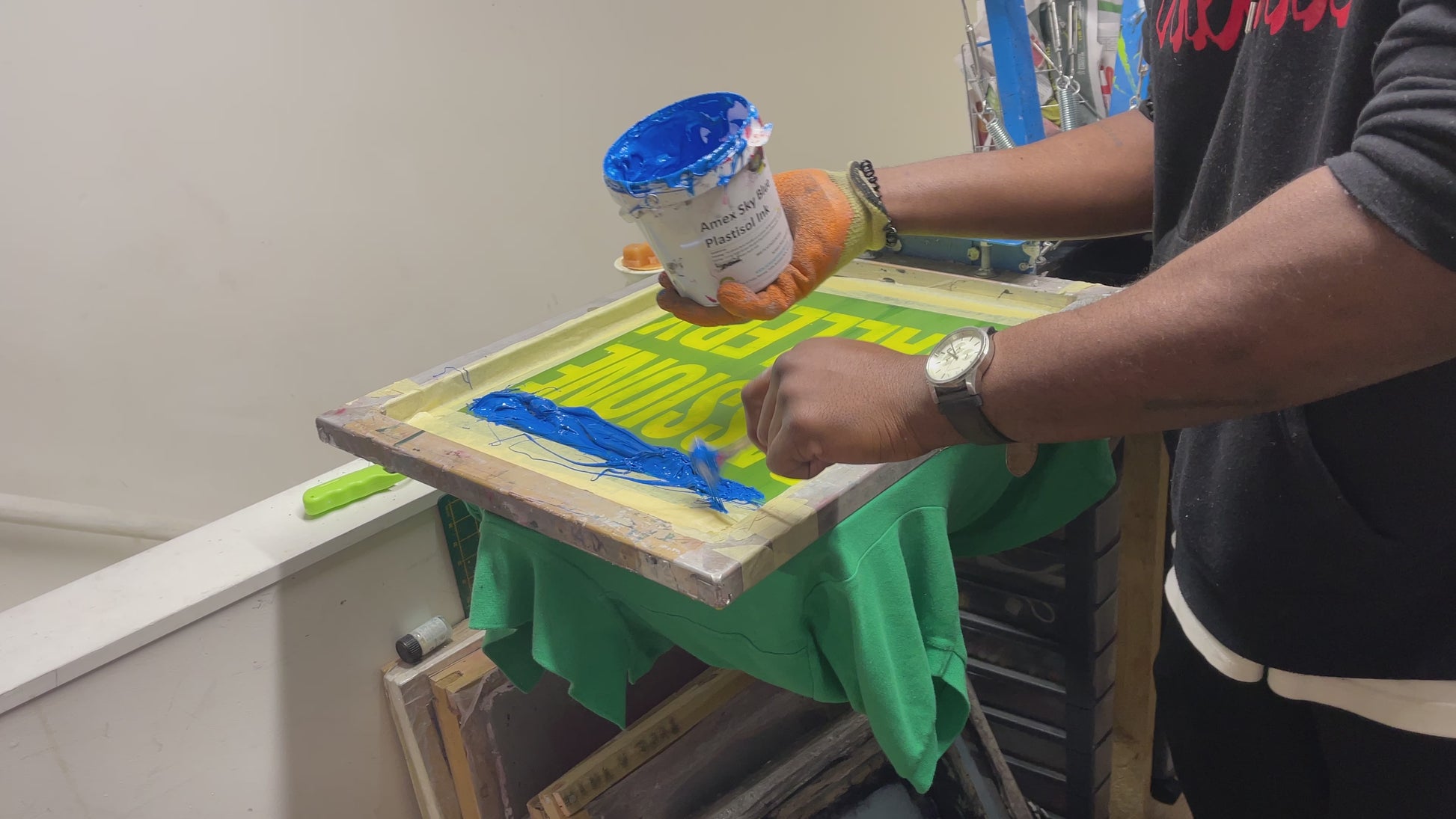Display Printing Uncovered: Every Little Thing You Required to Find Out About Tee Shirt and Garment Printing Strategies
Screen printing is a remarkable approach that combines art with technique, supplying limitless possibilities for creativity. Prepared to discover the crucial aspects that make display printing an art type?
The Fundamentals of Screen Printing: How It Functions
When you plunge into display printing, you'll find it's both a science and an art. At its core, screen printing includes developing a pattern, or screen, that permits ink to pass through just in specific areas.
Position the display over the textile, after that utilize a squeegee to push ink via the screen onto the garment. Each step is necessary, and understanding them will certainly boost your screen printing abilities, transforming easy garments right into distinct, expressive items.
Sorts Of Screen Printing Methods
When you grasp the fundamentals of screen printing, it's time to check out the numerous strategies that can boost your layouts. One popular method is standard screen printing, where ink is pressed via a stenciled display.
If you're going for great information, think about discharge printing. This method removes dye from the textile, leaving a soft, vintage look. Another choice is plastisol printing, understood for its resilience and vibrant colors, making it a favorite for lots of brands. Experiment with halftone printing to create gradient impacts and detailed layouts. Each technique has its one-of-a-kind charm, so don't think twice to attempt them out to locate what fits your design best!
Essential Tools for Screen Printing
To accomplish magnificent outcomes in display printing, having the ideal tools is fundamental. You'll require a strong display printing structure, which holds the mesh that moves your design onto the garment. Next, buy premium mops; these are necessary for applying ink evenly across the display. You'll likewise need a good exposure system to create your displays, in addition to a washout cubicle for cleansing them after usage. A trusted warm source, like a conveyor clothes dryer or warm press, is critical for curing your prints to guarantee durability. Don't fail to remember a proper office, equipped with tables and storage for your supplies. Ultimately, protective gear, such as handwear covers and masks, will keep you safe from chemicals and inks. With the right tools, you'll be well on your method to generating professional-quality prints.
Choosing the Right Inks and Products
When selecting inks and products for display printing, you require to take right into account the kind of ink that works finest for your job. Assume regarding material compatibility to assure your designs look wonderful and last long. Discover green ink alternatives to make your printing procedure much more sustainable.
Sorts Of Screen Inks
Picking the right display ink is necessary for accomplishing vivid, resilient prints that satisfy your project's demands. There are several sorts of screen inks to take a look at. Plastisol ink is preferred for its versatility and simplicity of usage, providing outstanding color opacity on dark textiles. Water-based ink, on the other hand, provides a softer feel and is green, making it suitable for those looking to decrease their ecological influence. Release inks get rid of dye from the fabric, causing a soft, classic appearance however require particular handling. Specialty inks, such as glow-in-the-dark or metal, can include one-of-a-kind effects to your layouts. Evaluate your task requirements and select the ink that straightens ideal with your wanted end result.

Textile Compatibility Considerations
Recognizing textile compatibility is vital for achieving top quality display prints, specifically because different products react distinctively to different inks. When selecting inks, think about the fabric type-- cotton, polyester, or blends. For cotton, water-based inks work well, providing gentleness and breathability. Polyester, on the various other hand, frequently calls for plastisol inks for much better bond and lively colors. If you're publishing on blends, you might require to make use of a mix of both types. Constantly examine your inks on sample material to ensure they adhere properly and keep shade stability. Additionally, maintain in mind that textile weight and texture can affect the last result, so choosing the right ink and product combination is crucial for your task's success.
Eco-Friendly Ink Options
Environment-friendly inks are ending up being a preferred option for screen printers that desire to reduce their environmental influence while preserving high quality. When choosing inks, take into consideration water-based inks, which are less dangerous and much easier to tidy up compared to conventional solvents. These inks bond well with materials, providing view it vivid results without toxic chemicals. You might likewise explore eco-solvent inks that use fewer volatile natural compounds (VOCs), making them a safer choice for both your health and the planet.
Furthermore, try to find inks made from renewable resources, such as soy or vegetable-based choices. By selecting the ideal inks and products, you'll not just create stunning styles however also add to an extra lasting printing procedure. Make the button, and your prints will mirror your commitment to the environment!
Preparing Your Design for Display Printing

Submit Layout Needs
To guarantee your design looks sharp and lively on fabric, you'll require to pay close focus to submit format demands for display printing. Start with vector data like AI or EPS, as they can be scaled without losing top quality. If you use raster photos, select high-resolution data, such as TIFF or PNG, preferably at 300 DPI. Avoid making use of JPEGs, as they can shed clarity when resized. Also, make certain your layout has a transparent history to stop unwanted white edges on your prints. Keep color modes in mind; CMYK is conventional for display printing, so transform your RGB creates appropriately - screen printing kit. By complying with these guidelines, you'll set your artwork up for an effective print.
Shade Separation Techniques
Shade separation is a crucial action in preparing your design for screen printing, and mastering it can greatly boost your print high quality. You'll need to break your design into specific shades, as each color needs a different display during printing. This accuracy not just assures precise shade representation yet additionally improves the printing procedure.
Resolution and Dimension
Attaining the Check This Out most effective lead to screen printing starts with ensuring your layout has the ideal resolution and dimension. Ideally, your artwork must go to the very least 300 DPI (dots per inch) for sharp, clear prints. If you utilize reduced resolution, your end product may look unprofessional and pixelated.
When it pertains to size, take into consideration the measurements of your print area. Design your artwork to match the final print size, preferably creating it in the actual dimensions you'll be publishing. This method, you'll stay clear of any type of unexpected scaling problems.
Constantly check your design in both vector and raster formats. Vector graphics can be scaled without shedding top quality, making them suitable for screen printing. Preparing properly will ensure your design looks outstanding on every garment!
Step-by-Step Display Printing Refine
Display printing is a dynamic procedure that permits you to create dynamic layouts on various surfaces. To obtain begun, you'll require Clicking Here a screen, emulsion, and your selected ink.
Pour ink onto the display and make use of a squeegee to press the ink with the stencil onto the material. Raise the display thoroughly and let the print dry. You have actually successfully screen printed your style.
Tips for Effective Screen Printing Projects
While you're diving right into your screen printing tasks, keep in mind that prep work is key to success. Beginning by gathering all your products-- inks, squeegees, garments, and screens. A clean workspace assists stop unwanted errors, so clean prior to you start.
Following, validate your art work is high-resolution and appropriately sized for your garment. Examine your screen for proper exposure and clean it extensively to avoid smudges. When mixing your inks, adhere to the supplier's guidelines to achieve the right uniformity.
During printing, use even stress with your squeegee for regular outcomes. Do not rush; take your time to verify each print fulfills your requirements. After printing, allow your garments completely dry totally prior to handling or packaging them.
Last but not least, always maintain an example of your benefit future referral. In this manner, you can examine your development and improve your techniques with time. Satisfied printing!

Regularly Asked Questions
The length of time Does It Take to Establish up a Display Printing Task?
Setting up a screen printing job commonly takes around 30 minutes to an hour. You'll prepare the screens, mix inks, and adjust journalism. The time differs based upon complexity and experience, so remain organized!
Can I Publish on Various Fabric Keys In Using the Same Method?
Yes, you can print on various fabric types using the exact same technique, yet you'll need to change your inks and settings. Some materials absorb ink differently, so trying out warranties the ideal outcomes for every material.
What Are Usual Mistakes to Avoid in Display Printing?
When display printing, stay clear of typical mistakes like making use of the incorrect ink, disregarding appropriate direct exposure times, or skipping pre-press checks. Constantly examine your configuration and keep clean screens to assure high quality results each time.
Exactly How Can I Appropriately Clean and Maintain My Screen Printing Equipment?
To correctly tidy and preserve your screen printing devices, you ought to frequently clean displays with ideal solvents, inspect mops for wear, and guarantee all tools are stored dust-free and completely dry. Uniformity enhances and stops pricey repair services efficiency.
Is Screen Printing Eco-friendly Compared to Other Methods?
Display printing can be more eco-friendly than various other techniques, specifically if you utilize eco-conscious materials and water-based inks. By picking lasting materials and methods, you decrease waste and reduce your influence on the world.
Display Printing Uncovered: Whatever You Required to Know Concerning T-Shirt and Garment Printing Techniques
At its core, screen printing includes creating a stencil, or display, that permits ink to pass with only in details areas. Position the screen over the fabric, after that use a squeegee to press ink with the display onto the garment. One prominent approach is conventional display printing, where ink is pushed through a stenciled display.When picking inks and materials for screen printing, you need to take right into account the type of ink that works ideal for your project.